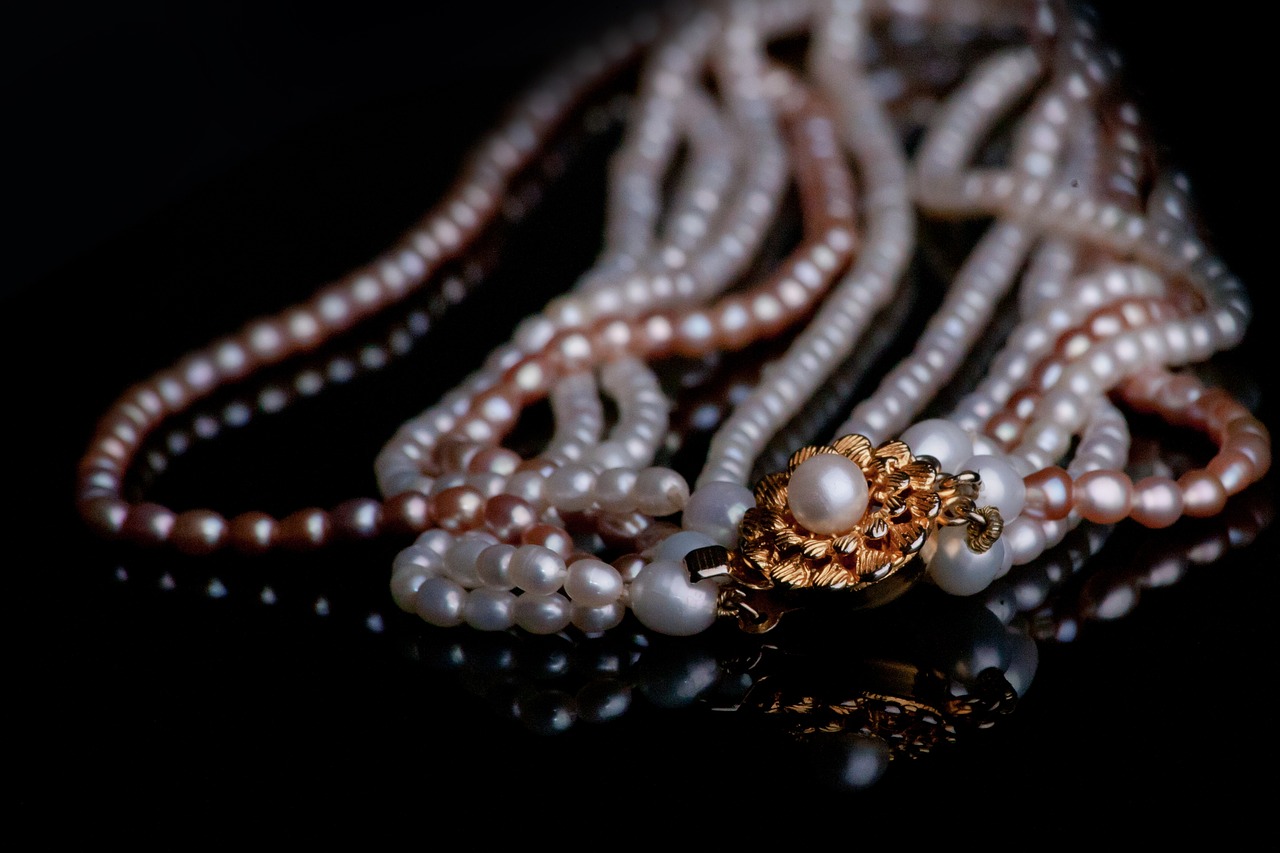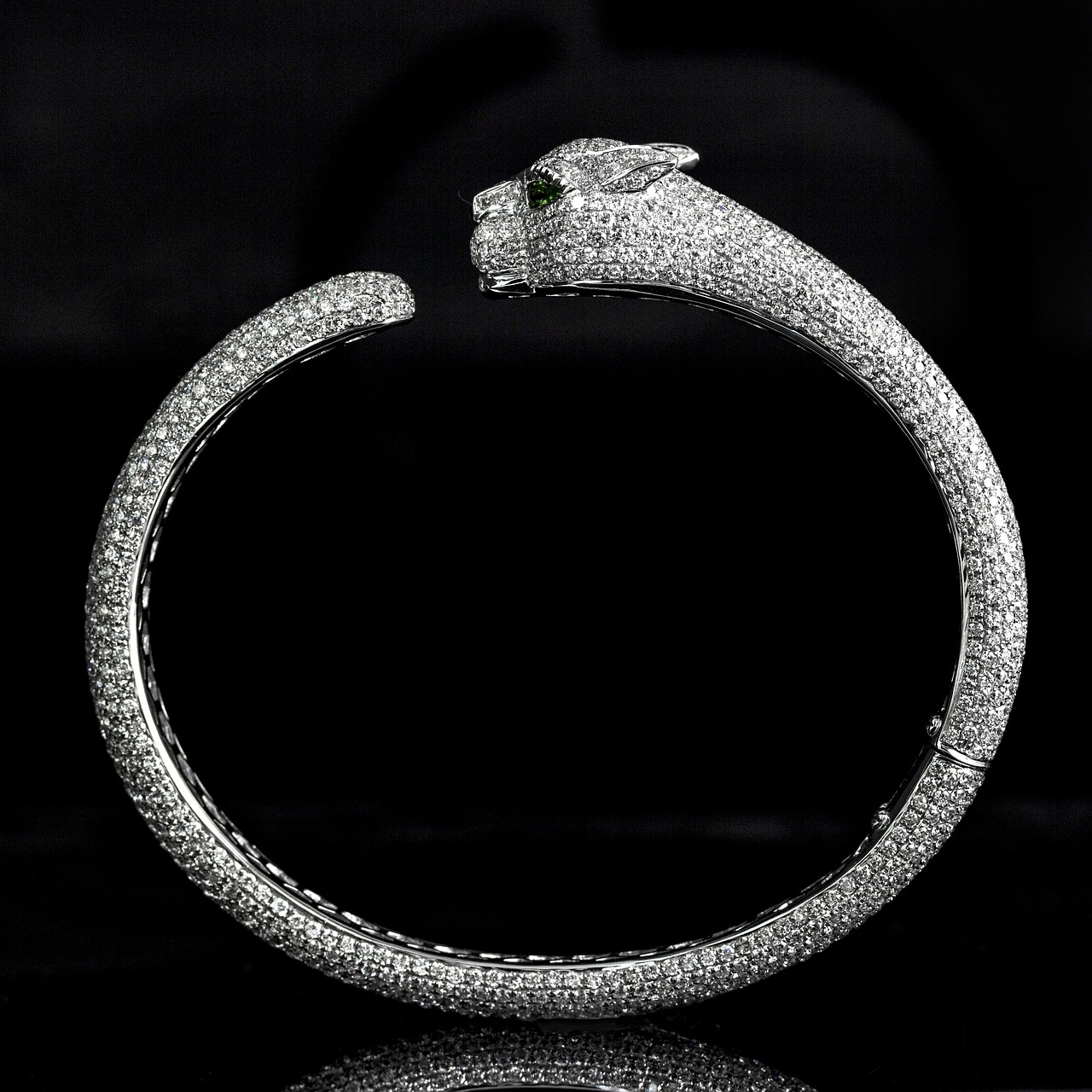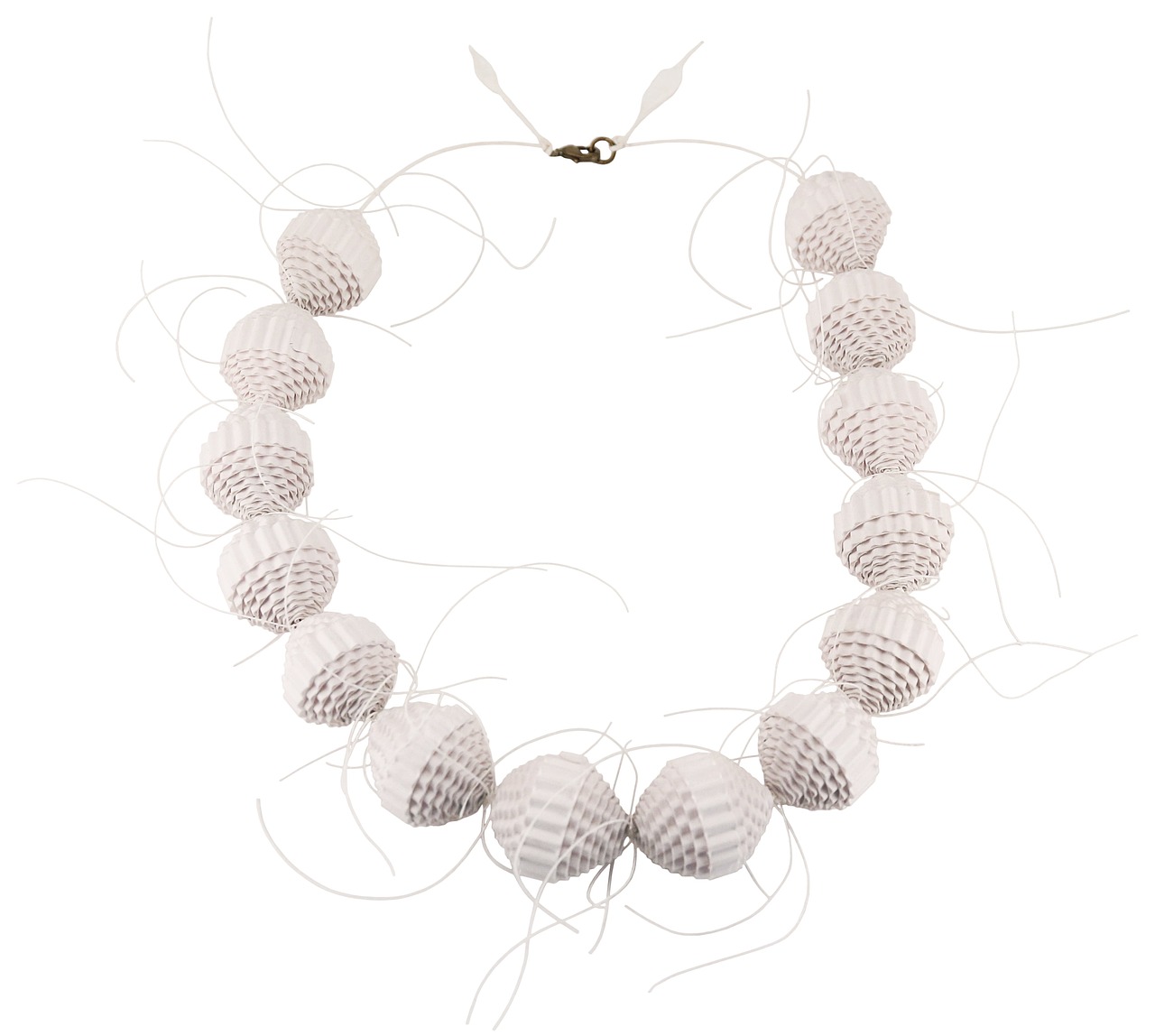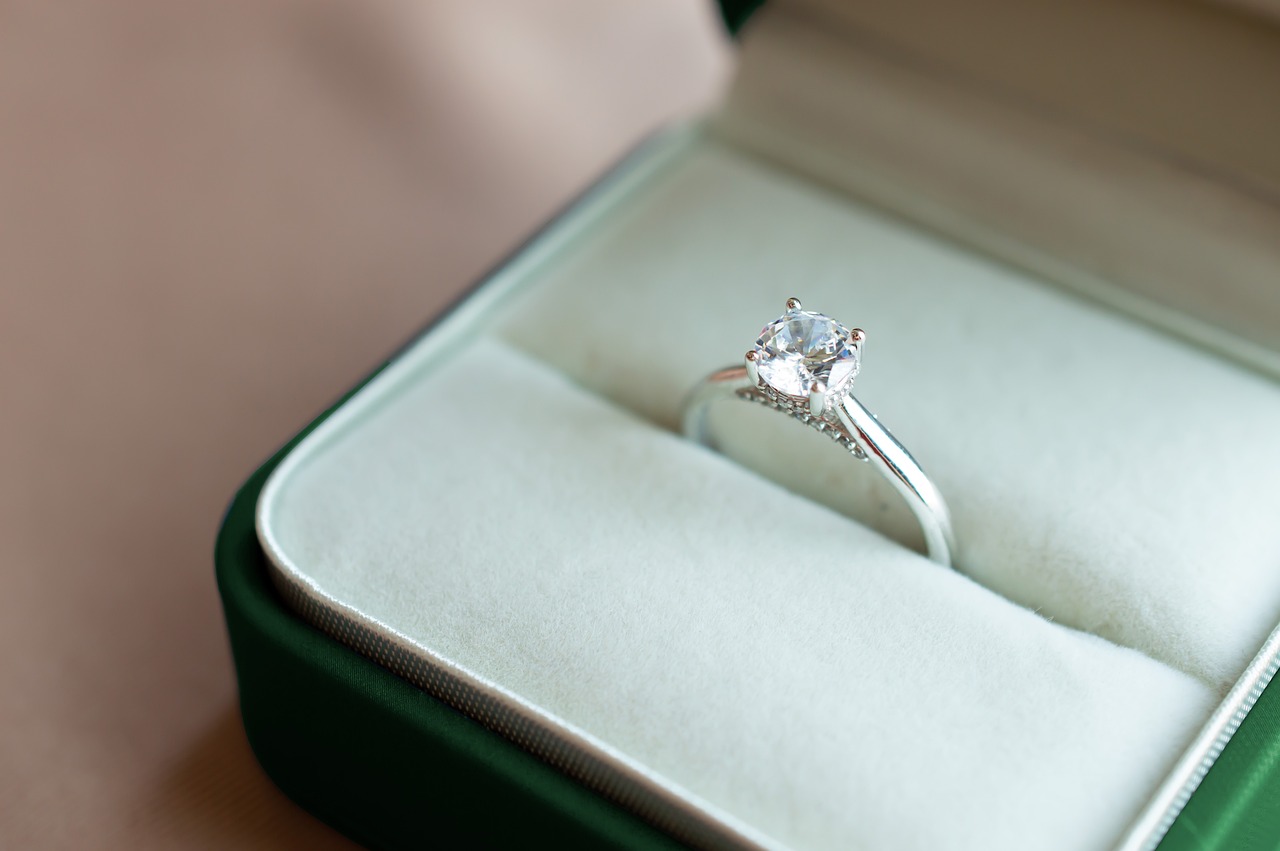This article delves into the fascinating world of gemstones, highlighting not only their stunning beauty but also their potential as investment opportunities. If you’re looking to enhance your collection while securing assets that may appreciate over time, this guide will help you identify which gemstones are worth considering.
Understanding the factors that contribute to a gemstone’s value is crucial for any investor. Key elements include:
- Rarity: The less common a gemstone, the higher its potential value.
- Quality: Factors such as clarity, cut, and color significantly influence a gemstone’s worth.
- Demand: Market trends and consumer preferences can drive prices up or down.
Several gemstones have demonstrated their value over time. Here are some of the most sought-after stones that offer both aesthetic appeal and financial potential:
Diamonds have long been considered a stable investment. Their timeless allure and consistent market demand make them a safe bet. Investors often appreciate their ability to hold value, even in fluctuating markets.
Emeralds are not just visually stunning; they are also experiencing a growing demand in the luxury market. Their rich green hue and rarity contribute to their increasing investment value. As more collectors seek high-quality emeralds, prices are expected to rise.
Rubies are often regarded as the most valuable colored gemstones. Their deep red color and rarity make them a favorite among collectors and investors alike. The market for rubies is robust, with prices reflecting their exceptional quality and demand.
While blue sapphires are the most recognized, fancy sapphires in colors like pink, yellow, and green are gaining popularity. This diversification in demand opens new avenues for investment, as collectors seek unique stones that stand out.
Keeping an eye on market trends is essential for gemstone investors. Current trends influencing prices include:
The demand for gemstones varies by region and is influenced by market conditions. Emerging markets are showing increased interest, driving prices higher. Understanding these dynamics can help investors make informed decisions.
Investing in gemstones is not without risks. Potential pitfalls include:
- Market Volatility: Prices can fluctuate based on economic conditions.
- Quality Misrepresentation: Ensuring the authenticity and quality of gemstones is critical.
Authenticating gemstones is vital to ensure sound investments. Here are key methods:
Certification from reputable organizations adds significant value and trust to a gemstone purchase. Look for certifications from recognized bodies to verify authenticity.
Understanding common forgery methods can protect investors from scams. Familiarize yourself with signs of counterfeit gemstones to avoid costly mistakes.
Finding the right source is crucial for gemstone investment. Consider the following:
Purchasing from reputable dealers or auctions can ensure quality. Research and ask for recommendations to find trustworthy sources.
Both online and physical stores have their pros and cons. Online shopping offers convenience, while brick-and-mortar stores provide the opportunity to inspect gemstones in person. Weigh these options to find the best fit for your investment needs.

What Makes a Gemstone Valuable?
When it comes to investing in gemstones, understanding what makes a gemstone valuable is crucial. Investors should be aware that several factors intertwine to determine a gemstone’s worth. The three primary components are rarity, quality, and demand. Each of these elements plays a significant role in shaping the market value of gemstones.
Rarity is perhaps the most influential factor in determining a gemstone’s value. The less common a gemstone is, the higher its potential worth. For instance, certain colored diamonds are incredibly rare, making them highly sought after. Similarly, gemstones like alexandrite and painite are known for their scarcity, which directly impacts their market price. Investors should consider the availability of a gemstone and its natural occurrence when assessing its investment potential.
The quality of gemstones is typically evaluated based on the Four Cs: Cut, Color, Clarity, and Carat weight. Each of these factors contributes to the overall appeal and value of a gemstone:
- Cut: A well-cut gemstone maximizes its brilliance and visual appeal.
- Color: The intensity and hue of a gemstone can significantly affect its desirability.
- Clarity: Fewer inclusions or blemishes usually mean a higher quality stone.
- Carat: Larger gemstones tend to be more valuable, but size alone does not guarantee quality.
Investors should prioritize these characteristics when evaluating potential purchases, as they can substantially influence resale value.
Understanding demand is essential for investors looking to maximize their returns. Market trends can fluctuate based on consumer preferences, economic conditions, and cultural influences. For example, the rising popularity of colored gemstones over traditional diamonds has shifted demand dynamics. Investors should keep an eye on emerging trends and preferences to make informed decisions.
Keeping abreast of market trends can help investors identify valuable opportunities. Factors such as global economic conditions, fashion trends, and even social media influences can sway consumer interest. For instance, the increasing popularity of ethical and sustainable gemstones has created a niche market that savvy investors can tap into.
Investors must also consider the investment potential of gemstones. While some stones may appreciate quickly, others may require a longer holding period to realize significant gains. For example, high-quality emeralds and rubies are known for their long-term value appreciation, whereas more common stones may not yield the same results.
In conclusion, understanding the factors that contribute to a gemstone’s value is essential for making informed investment decisions. By focusing on rarity, quality, and demand, investors can navigate the complex gemstone market with greater confidence. Whether you are a seasoned investor or a newcomer, taking the time to research and understand these elements can lead to rewarding investment opportunities.
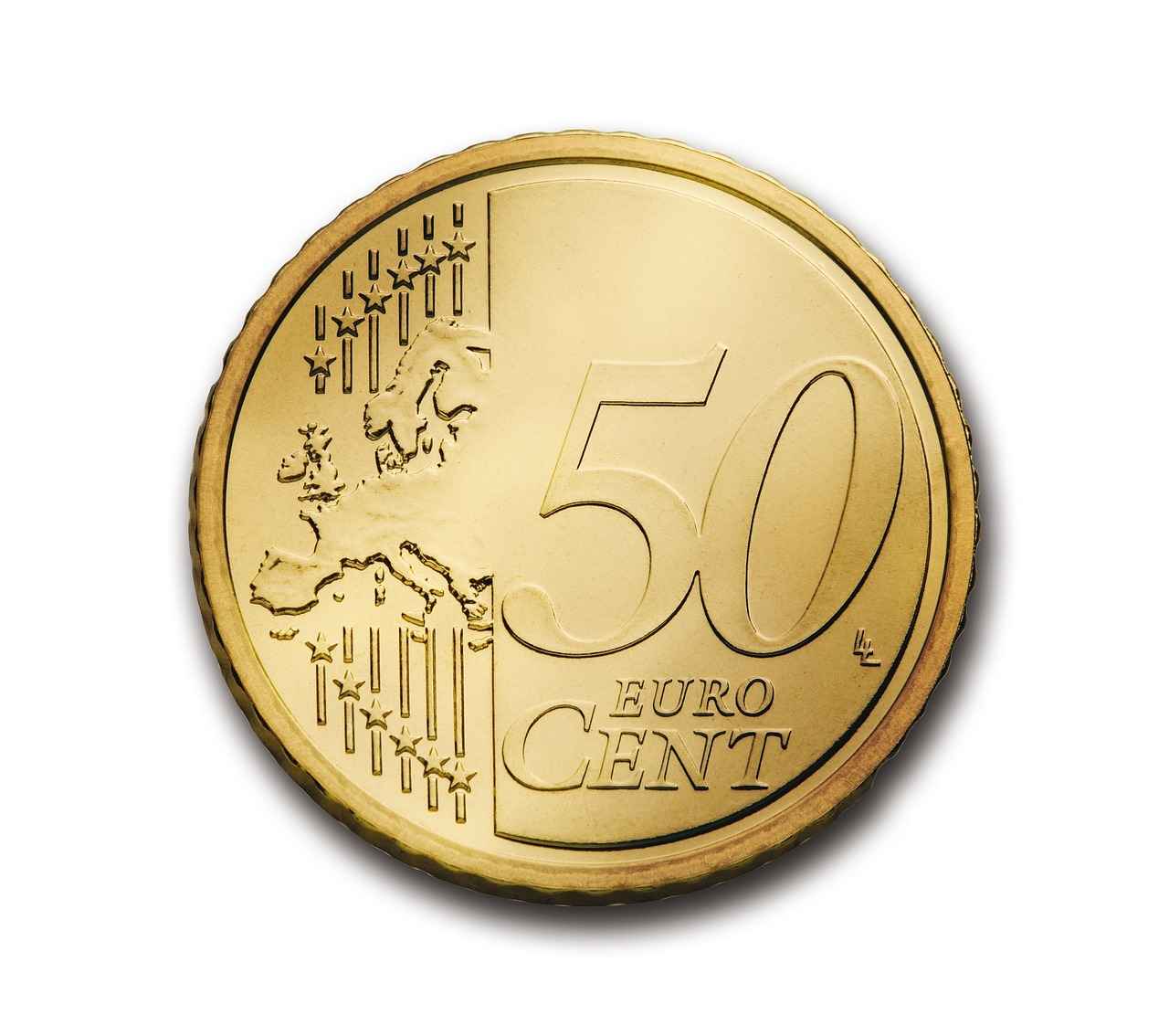
Top Gemstones for Investment
When considering gemstones for investment, it is essential to recognize that not all stones are created equal. Some have a proven track record of appreciation in value, making them attractive options for both collectors and investors alike. In this section, we delve into the top gemstones that not only captivate the eye but also hold significant financial potential.
The value of a gemstone is influenced by several factors, including:
- Rarity: The less commonly found a gemstone is, the more valuable it typically becomes.
- Quality: This encompasses clarity, cut, color, and carat weight, all of which contribute to a stone’s beauty and marketability.
- Market Demand: Trends in consumer preferences can significantly affect gemstone prices.
Diamonds have long been regarded as the quintessential investment gemstone. Their enduring popularity and stable market make them a safe choice. The Four Cs—cut, color, clarity, and carat—are critical in determining a diamond’s value. Additionally, diamonds have a robust resale market, further solidifying their status as a reliable investment.
With their vibrant green hue, emeralds are increasingly sought after in the luxury market. Their rarity, particularly in high-quality stones, contributes to their rising value. Investors should focus on emeralds with minimal inclusions and rich color saturation, as these factors significantly enhance their worth.
Rubies are often considered the most valuable colored gemstones. Their deep red color, especially in stones from Myanmar, commands high prices. The demand for rubies is on the rise, fueled by their historical significance and cultural allure. Investors should seek out untreated rubies, as these are more valuable than those that have undergone enhancements.
While blue sapphires are the most recognized, fancy sapphires—which come in a variety of colors—are gaining popularity. The market for these gemstones is expanding, offering investors a unique opportunity. High-quality sapphires with vivid colors and excellent clarity can yield substantial returns.
Monitoring market trends is crucial for making informed investment decisions. Factors such as global economic conditions, fashion trends, and cultural shifts can influence gemstone demand and pricing. Staying updated on these trends helps investors time their purchases effectively.
Investing in gemstones is not without risks. Potential pitfalls include:
- Market Volatility: Prices can fluctuate based on economic conditions.
- Authenticity Issues: Counterfeit stones can lead to significant financial losses.
- Liquidity: Selling gemstones may take time, as finding the right buyer can be challenging.
To mitigate these risks, investors should conduct thorough research and consider seeking advice from experienced professionals in the field.
Finding reputable sources is vital for ensuring the quality and authenticity of your gemstone investments. Consider purchasing from:
- Reputable Dealers: Established dealers often provide certificates of authenticity and can offer valuable insights.
- Auctions: Auctions can be a great place to find unique stones, but due diligence is necessary.
- Online Platforms: While convenient, ensure that the platform has a solid reputation and offers guarantees on authenticity.
Diamonds: The Classic Investment Choice
When it comes to investing in gemstones, diamonds stand out as a classic choice, revered for both their beauty and their ability to retain value over time. Their timeless appeal and market stability make them a preferred option for investors seeking a safe bet in the gemstone market. But what exactly makes diamonds such a reliable investment?
Diamonds are not just coveted for their brilliance and durability; they are also seen as a stable asset in the financial world. Here are a few reasons why:
- Rarity: High-quality diamonds are rare, especially those with exceptional color, clarity, and cut. This scarcity contributes significantly to their value.
- Market Demand: The global demand for diamonds remains strong, driven by cultural significance and the luxury market, which consistently seeks these exquisite stones.
- Long-Term Value: Unlike many other investments, diamonds have a history of appreciating over time, making them a wise choice for long-term investors.
Investors need to be aware of the dynamics that influence the diamond market. Factors such as economic conditions, geopolitical stability, and consumer trends can all impact diamond prices. For instance, during economic downturns, luxury items may see a decline in demand, but diamonds often retain their allure as a tangible asset.
When selecting diamonds for investment, consider the following:
- Certification: Ensure that the diamond comes with a certification from a reputable gemological laboratory. This adds credibility and assures you of the stone’s quality.
- Quality Factors: Familiarize yourself with the Four Cs of diamonds: Cut, Color, Clarity, and Carat weight. Each factor plays a critical role in determining the diamond’s value.
- Market Trends: Stay informed about current trends in the diamond market. For example, fancy colored diamonds have seen a surge in popularity and value in recent years.
While diamonds are generally considered a safe investment, there are risks involved:
- Market Fluctuations: Prices can vary based on market conditions, and a downturn can affect the resale value of your investment.
- Liquidity: Unlike stocks or bonds, selling diamonds can take time, and finding the right buyer may not always be easy.
- Counterfeits: The diamond market is not immune to fraud. Be cautious and ensure proper authentication to avoid potential scams.
Identifying the right source for purchasing diamonds is crucial. Here are some options:
- Reputable Jewelers: Established jewelers often provide a selection of certified diamonds and can offer valuable insights.
- Online Retailers: Many online platforms now offer a wide range of diamonds. Ensure they have a good reputation and return policy.
- Auction Houses: Auctions can be a great way to find unique diamonds, but be cautious and do your research beforehand.
In conclusion, diamonds remain a classic investment choice due to their enduring beauty, rarity, and market stability. By understanding the factors that influence their value and being mindful of the associated risks, investors can make informed decisions that align with their financial goals.
Emeralds: A Colorful Investment
Emeralds have captivated humanity for centuries with their vibrant green hues and rich history. As a gemstone, they are not only visually stunning but also increasingly recognized for their investment potential. In recent years, the demand for emeralds has surged in the luxury market, making them a compelling option for investors looking to diversify their portfolios.
The rising demand for emeralds can be attributed to several factors:
- Rarity: High-quality emeralds are rare, particularly those that are untreated and possess a deep green color. This scarcity enhances their value in the market.
- Historical Significance: Emeralds have a rich history, often associated with royalty and wealth. This historical allure continues to attract collectors and investors alike.
- Fashion Trends: With the increasing popularity of unique and colorful jewelry, emeralds have become a favored choice among designers and consumers, further driving demand.
Investing in emeralds can be a wise decision for several reasons:
- Appreciation Potential: Over the past decade, emerald prices have appreciated significantly, making them a potentially lucrative investment.
- Market Stability: Unlike some other gemstones, emeralds have shown consistent demand, providing a sense of stability in an otherwise volatile market.
- Diverse Options: Emeralds come in various sizes, qualities, and prices, allowing investors of all levels to participate in the market.
Several key factors influence the pricing of emeralds:
- Color: The most sought-after emeralds exhibit a vivid green color, with a slight bluish hue. The intensity of the color significantly impacts value.
- Clarity: Emeralds often contain inclusions, but those with fewer visible imperfections are more valuable.
- Origin: Emeralds from specific locations, such as Colombia, are often considered more valuable due to their quality and historical significance.
When comparing emeralds to other gemstones, several distinctions arise:
- Diamonds: While diamonds are often viewed as the standard for investment, emeralds offer a unique aesthetic appeal and emotional connection that diamonds may lack.
- Rubies: Rubies have a strong market presence, but emeralds are increasingly seen as a more diverse investment option due to their color and rarity.
- Sapphires: Although sapphires are popular, emeralds stand out due to their rich history and cultural significance.
For those considering investing in emeralds, here are some practical tips:
- Research: Familiarize yourself with the market, including trends and valuation methods.
- Certification: Always seek certified emeralds from recognized gemological laboratories to ensure authenticity.
- Reputable Dealers: Purchase from established jewelers or auction houses to minimize risks associated with counterfeit stones.
In conclusion, the growing demand for emeralds in the luxury market, combined with their unique qualities and investment potential, makes them an attractive option for collectors and investors alike. As with any investment, thorough research and careful consideration are essential to maximize value and minimize risks.
Rubies: The King of Gemstones
Rubies have long been celebrated as the king of gemstones, captivating collectors and investors alike with their vibrant hues and rich history. These stunning red stones are not only a symbol of love and passion but also represent a significant investment opportunity. In this section, we will explore the unique qualities that make rubies stand out in the gemstone market and why they are a favored choice among investors.
The value of rubies is determined by several critical factors, including their color, clarity, carat weight, and cut. The most sought-after rubies exhibit a vivid red color, often referred to as “pigeon blood” red, which is highly prized in the market. Additionally, rubies are among the rarest gemstones, especially those of high quality, making them a lucrative investment option.
Rarity plays a significant role in the desirability of rubies. Unlike diamonds, which are more abundant, high-quality rubies are scarce. This scarcity drives up demand, particularly among collectors and investors looking for stones that will appreciate over time. As the global market for colored gemstones expands, the demand for rubies continues to grow, solidifying their status as a valuable asset.
Investing in rubies can yield substantial returns. Historical data shows that the value of high-quality rubies has appreciated significantly over the past few decades. Moreover, as more investors turn their attention to colored gemstones, the market for rubies is expected to continue its upward trajectory. Investors should consider the long-term value of rubies, especially given their increasing popularity and the limited supply of top-tier stones.
- Seek Certification: Always look for rubies that come with certification from recognized gemological laboratories. This ensures authenticity and quality.
- Assess the Color: Prioritize rubies with a deep, vibrant color, as these are more likely to appreciate in value.
- Evaluate Clarity: While inclusions are common in natural rubies, stones with fewer visible inclusions tend to be more valuable.
- Consider Carat Weight: Larger stones are rarer and generally command higher prices, making them a more attractive investment.
Investors should stay informed about market trends that influence ruby prices. Factors such as economic conditions, fashion trends, and cultural significance can all impact demand. For example, the growing interest in ethical sourcing and sustainability has led to an increase in demand for responsibly sourced rubies, further driving their value.
When purchasing rubies for investment, it is crucial to source them from reputable dealers or auctions. Look for dealers who specialize in colored gemstones and have a solid track record. Online platforms can also offer a wide selection, but ensure they provide certification and a return policy for peace of mind.
In summary, rubies are not just beautiful gemstones; they are also a sound investment choice. With their rarity, increasing demand, and potential for appreciation, rubies hold a prominent place in the world of gemstone investing. Whether you are a seasoned investor or a novice collector, understanding the unique qualities of rubies will help you make informed decisions in your gemstone journey.
Sapphires: Beyond Blue
While blue sapphires have long dominated the gemstone market, a vibrant array of fancy sapphires in hues such as pink, yellow, and green are increasingly capturing the attention of collectors and investors alike. This shift represents not only a change in aesthetic preferences but also reveals a fascinating evolution in market dynamics and investment potential.
Fancy sapphires are any sapphires that are not blue. These stones can display a wide spectrum of colors, including pink, yellow, orange, green, and even purple. Each color variation has its unique appeal and market demand.
- Rarity: Fancy sapphires are often rarer than their blue counterparts, making them more desirable to collectors.
- Aesthetic Appeal: The diverse colors of fancy sapphires offer unique beauty, allowing for more personalized choices.
- Market Growth: As awareness of fancy sapphires increases, so does their market value, presenting a lucrative investment opportunity.
The market for fancy sapphires is evolving rapidly. Recent years have seen a surge in demand, particularly from Asia and the Middle East, where these gemstones are increasingly viewed as symbols of luxury and status. Investors are recognizing that while blue sapphires remain a staple, fancy sapphires offer a new frontier for growth.
Several factors contribute to the investment potential of fancy sapphires:
- Color Quality: The intensity and purity of color significantly affect value. Vivid hues command higher prices.
- Clarity and Cut: Like all gemstones, clarity and the quality of the cut can enhance the stone’s appeal and investment value.
- Origin: Sapphires from specific locations, such as Kashmir and Burma, are often more sought after, adding to their investment potential.
While the potential for profit exists, investors should also be aware of the risks involved. The gemstone market can be volatile, and prices may fluctuate based on demand and market trends. It is essential to conduct thorough research and consult with experts before making significant investments.
Investors should seek reputable dealers and auction houses specializing in colored gemstones. Online platforms also offer a wide selection, but it’s crucial to verify the seller’s credibility and the authenticity of the stones.
In summary, the fancy sapphire market is gaining momentum, with increasing interest from investors and collectors. As these gemstones continue to rise in popularity, understanding their unique qualities and market dynamics can help you make informed investment decisions.

Understanding Market Trends
Understanding market trends is essential for anyone looking to invest in gemstones. The gemstone market is influenced by a variety of factors, including economic conditions, consumer preferences, and emerging trends. In this section, we will delve into the current trends that affect gemstone prices and demand, providing you with the insights needed to make informed investment decisions.
Gemstone prices are not static; they fluctuate based on several key factors:
- Supply and Demand: The basic economic principle of supply and demand plays a significant role in determining gemstone prices. When demand for a particular gemstone increases, prices tend to rise, especially if the supply is limited.
- Market Preferences: Trends in consumer preferences can shift rapidly. For instance, certain colors or types of gemstones may become more fashionable, leading to increased demand and higher prices.
- Investment Trends: More investors are recognizing gemstones as an alternative asset class. This growing interest can drive up prices, particularly for rare and high-quality stones.
Emerging markets, particularly in Asia and the Middle East, are experiencing a surge in demand for gemstones. Countries like China and India have a long-standing tradition of valuing gemstones, and as their economies grow, so does their appetite for luxury items. This increased demand from emerging markets can significantly influence global gemstone prices.
Technology is reshaping the gemstone market in various ways:
- Online Platforms: The rise of online marketplaces has made it easier for investors to buy and sell gemstones. This accessibility can lead to increased competition and price transparency.
- Blockchain Technology: The use of blockchain for tracking gemstone provenance is gaining traction. This technology enhances trust and can positively impact prices by assuring buyers of authenticity.
Today’s consumers are increasingly concerned about the ethical sourcing of gemstones. Issues such as mining practices and environmental impact are becoming more prominent. Gemstones sourced from conflict-free zones or those that are sustainably mined are often more sought after, which can drive up their prices.
For gemstone investors, staying informed is crucial. Here are some strategies to keep an eye on market trends:
- Follow Industry Reports: Regularly read reports from gemological institutes and market analysts to understand price trends and forecasts.
- Join Gemstone Investment Forums: Engaging with other investors can provide valuable insights and firsthand information about market shifts.
- Attend Trade Shows: Participating in gemstone trade shows allows investors to network and learn about the latest trends and innovations in the market.
In conclusion, understanding market trends is vital for making informed decisions in gemstone investing. By monitoring supply and demand dynamics, emerging markets, technological advancements, and ethical considerations, investors can position themselves to capitalize on opportunities in this vibrant market.
Global Demand for Gemstones
The global demand for gemstones is an intricate tapestry woven from various factors, including cultural significance, market trends, and economic conditions. Understanding these elements is crucial for investors looking to capitalize on the beauty and potential value of gemstones.
Several key factors contribute to the increasing global interest in gemstones:
- Cultural Significance: In many cultures, gemstones are seen as symbols of wealth, status, and even spirituality. This cultural attachment drives demand, particularly in regions where traditional practices value specific stones.
- Market Trends: The luxury market has seen a surge in demand for unique and rare gemstones. As consumers seek personalized luxury items, the appeal of one-of-a-kind gemstones has grown.
- Investment Potential: Many investors view gemstones as a hedge against inflation and economic instability. Their rarity and intrinsic value make them an attractive option for diversifying investment portfolios.
- Technological Advancements: Innovations in gemstone mining and processing have made it easier to access previously hard-to-find stones, thereby increasing their availability in the market.
The demand for gemstones can significantly vary by region. For instance:
- North America: In the United States and Canada, diamonds and colored gemstones like sapphires and emeralds are particularly sought after, driven by a growing trend in personalized jewelry.
- Asia: Markets in countries like China and India are experiencing a renaissance in gemstone appreciation, with a growing middle class investing in luxury items as symbols of status.
- Europe: European consumers are increasingly interested in ethically sourced and sustainable gemstones, affecting the types of stones that are in demand.
The value of gemstones is not static; it fluctuates based on various market conditions:
- Economic Factors: Economic downturns can lead to decreased consumer spending on luxury items, including gemstones. Conversely, a booming economy can drive prices up.
- Supply and Demand: Limited supply of certain gemstones, especially those that are mined in specific regions, can lead to increased prices as demand rises.
- Global Events: Natural disasters, political instability, or trade restrictions can impact the availability of gemstones, thus influencing their market value.
Investors should consider several factors when exploring the potential for gemstone investments:
- Rarity: Stones that are rare or have unique qualities are more likely to appreciate in value over time.
- Quality: The quality of a gemstone—its color, clarity, cut, and carat weight—plays a significant role in determining its investment potential.
- Market Trends: Staying informed about current trends can help investors identify which gemstones are gaining popularity and may offer better returns.
In summary, the global demand for gemstones is influenced by a blend of cultural, economic, and market factors. Investors who understand these dynamics can make informed decisions that enhance their collections and potentially yield significant returns.
Investment Risks and Considerations
Investing in gemstones can be a lucrative endeavor, but it is essential to understand the risks and considerations involved before making a purchase. This section will delve into the potential pitfalls that investors should be aware of, ensuring informed decisions are made.
One of the primary risks associated with gemstone investment is market volatility. Like any investment, the value of gemstones can fluctuate based on supply and demand. Factors such as economic downturns or changes in consumer preferences can significantly impact prices.
Another crucial consideration is the authenticity of the gemstones. Without proper certification, investors may unknowingly purchase counterfeit stones or stones that are misrepresented. Always seek gemstones that come with a certificate from a reputable gemological laboratory, which verifies the stone’s quality and authenticity.
The quality of a gemstone is determined by several factors, including its cut, color, clarity, and carat weight. These factors are collectively known as the Four Cs and play a vital role in establishing a gemstone’s value. Investors should educate themselves on these grading criteria to make informed choices.
Liquidity is another significant concern for gemstone investors. Unlike stocks or bonds, gemstones may not have a readily available market for resale. This can lead to challenges when trying to liquidate an investment, especially if the stone is unique or rare.
Trends in the gemstone market can also pose risks. What is in demand today may not hold the same appeal in the future. It is essential to stay informed about market trends and consumer preferences, as they can drastically affect the value of your investment.
Investors should also be cautious of overpaying for gemstones. Without proper knowledge and research, it is easy to fall victim to inflated prices, especially from less reputable sellers. Conducting thorough research and comparing prices across various platforms can help mitigate this risk.
Lastly, it is crucial to differentiate between emotional and financial investment. While gemstones can be beautiful and hold sentimental value, it is important to approach them as a financial investment. Emotional attachment can cloud judgment and lead to poor investment choices.
In summary, investing in gemstones requires careful consideration and awareness of potential risks. By understanding market volatility, ensuring authenticity, recognizing quality, and staying informed about trends, investors can navigate the gemstone market more effectively. Make informed decisions to maximize your investment potential and minimize risks.
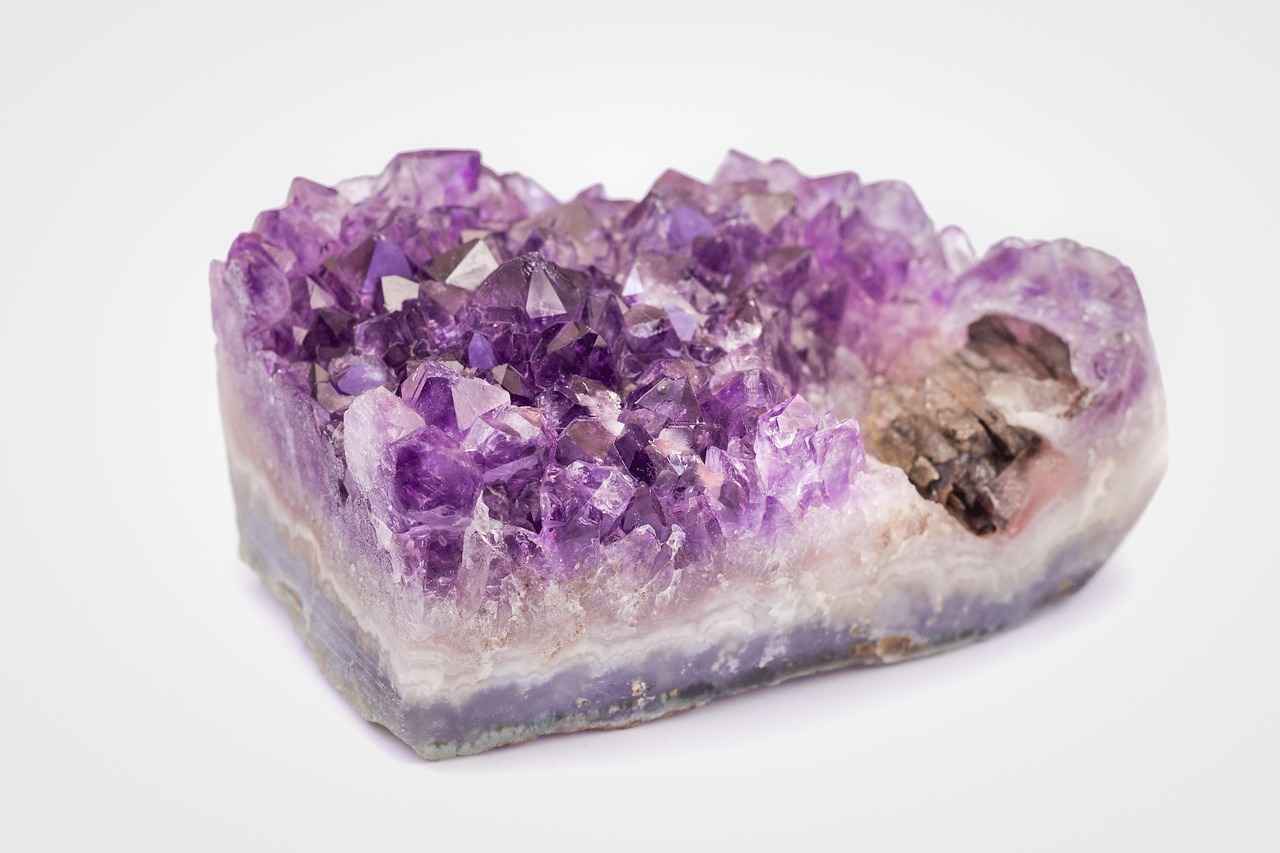
How to Authenticate Gemstones
When investing in gemstones, ensuring their authenticity is paramount. With the rise in popularity of gemstones as investment options, the market has also seen an increase in counterfeit stones. Therefore, understanding how to authenticate gemstones is essential for any investor. This guide will delve into the various methods and tools used to verify the authenticity of gemstones, providing you with the knowledge needed to make informed decisions.
Investing in gemstones can be lucrative, but it comes with inherent risks. Authenticating gemstones protects your investment by ensuring that you are purchasing genuine stones rather than fakes. Without proper verification, you risk losing money on a counterfeit or misrepresented gem.
- Visual Inspection: A trained eye can often identify inconsistencies in color, cut, and clarity that may indicate a fake. Look for bubbles in glass imitations or unnatural color patterns.
- Gemological Testing: Using tools such as refractometers, spectroscopes, and microscopes, gemologists can analyze the physical and optical properties of gemstones. These tests can reveal important details about a stone’s composition.
- Certification: Always seek gemstones that come with a certificate from a reputable gemological laboratory. Certificates provide detailed information about the gemstone’s characteristics and confirm its authenticity.
| Tool | Purpose |
|---|---|
| Refractometer | Measures the refractive index of a gemstone to help identify its type. |
| Spectroscope | Analyzes the light spectrum emitted by a gemstone, revealing its unique characteristics. |
| Microscope | Allows for close examination of inclusions and other features that can help determine authenticity. |
Being aware of common forgery techniques can help you avoid costly mistakes. Here are some methods used by counterfeiters:
- Glass Imitations: Many fake gemstones are made from glass, which can be polished to resemble the real thing but lacks the same properties.
- Lab-Created Stones: While not necessarily forgeries, lab-created stones can sometimes be misrepresented as natural gemstones. Always check for certification.
- Color Treatments: Some gemstones undergo treatments to enhance their color. While this is not always a sign of a fake, it can affect value and should be disclosed.
Certification from a reputable organization adds immense value to your gemstone purchase. It not only verifies authenticity but also provides assurance regarding the stone’s quality and characteristics. Some of the most recognized certification bodies include:
- Gemological Institute of America (GIA)
- American Gem Society (AGS)
- International Gemological Institute (IGI)
In conclusion, authenticating gemstones is a critical step in the investment process. By employing various methods and utilizing the right tools, you can ensure that your investments are sound and genuine. Always prioritize certification and stay informed about common forgery techniques to protect your investment.
Certification: Why It Matters
Certification of gemstones is a crucial aspect for anyone looking to invest in these precious stones. It serves as a guarantee of quality, authenticity, and value. When you purchase a gemstone, having a certification from a reputable organization can significantly enhance your trust in the purchase and provide peace of mind. But what exactly does certification entail, and why should it matter to you as an investor?
Gemstone certification is the process of evaluating and authenticating a gemstone by a professional gemologist, typically associated with a recognized gemological institute. This certification includes detailed information about the gemstone, such as:
- Type of gemstone
- Color
- Clarity
- Carat weight
- Cut quality
- Origin
Investing in gemstones can be risky, especially if you are not well-versed in the nuances of the market. Here are some reasons why certification is vital:
- Trust and Transparency: A certified gemstone comes with a guarantee of its quality and authenticity. This transparency helps build trust between the buyer and the seller.
- Market Value: Certified gemstones often hold a higher resale value compared to non-certified stones. Buyers are generally more willing to pay a premium for a stone that comes with a certification.
- Protection Against Fraud: The gemstone market can be rife with forgeries and misrepresentations. Certification acts as a protective measure against these fraudulent practices.
Several organizations are known for their rigorous standards in gemstone certification. Here are some of the most reputable certification bodies in the industry:
| Certification Body | Overview |
|---|---|
| Gemological Institute of America (GIA) | One of the most respected organizations, GIA is known for its comprehensive grading system, especially for diamonds. |
| American Gem Society (AGS) | AGS provides strict grading standards and is particularly well-regarded for its diamond certifications. |
| International Gemological Institute (IGI) | IGI offers certifications for a wide range of gemstones and is recognized globally. |
| European Gemological Laboratory (EGL) | EGL is known for its detailed reports and is popular in both Europe and North America. |
When purchasing a gemstone, always verify the certification. Check that the certificate is genuine and issued by a recognized body. You can do this by:
- Looking for a unique identification number on the certificate that corresponds with the gemstone.
- Contacting the certification body directly to confirm the details.
In conclusion, certification is not just a piece of paper; it is a vital tool for gemstone investors. It adds value and trust to your purchase, ensuring that you are making a sound investment. Always prioritize certified gemstones to maximize your investment potential.
Common Forgery Techniques
When investing in gemstones, it is crucial to be aware of the potential risks associated with forgery. can deceive even the most experienced investors. By familiarizing yourself with these methods, you can protect your investments and avoid costly mistakes.
Understanding the various forgery methods is essential for anyone looking to invest in gemstones. Counterfeit gemstones can look remarkably similar to genuine stones, making it challenging to distinguish between the two. By being informed, you can make better purchasing decisions and safeguard your financial interests.
- Color Enhancement: Many gemstones undergo treatments to enhance their color. While some treatments are accepted in the industry, others can mislead investors. For instance, dyed stones may appear vibrant but lack the natural beauty and value of untreated gemstones.
- Glass Imitations: Glass can be crafted to mimic various gemstones, including diamonds and emeralds. These imitations can be convincing, but they lack the durability and intrinsic value of real stones.
- Laboratory-Created Gemstones: While not necessarily forgeries, lab-created stones can be marketed as natural gemstones. Understanding the differences between natural and lab-created stones is vital for investors.
- Fake Certifications: Some sellers may provide fraudulent certification documents to validate a counterfeit gemstone’s authenticity. Always verify the certification with the issuing organization.
Identifying counterfeit gemstones requires a keen eye and some knowledge of the characteristics of genuine stones. Here are some tips to help you:
- Examine the Clarity: Genuine gemstones often have unique inclusions or imperfections. If a stone appears flawless, it may be a sign of a counterfeit.
- Check the Weight: Many counterfeit stones are lighter than their natural counterparts. Familiarizing yourself with the weight of genuine gemstones can help you spot forgeries.
- Use a Loupe: A jeweler’s loupe can reveal details that the naked eye cannot see. Look for signs of treatment or inconsistencies in the stone’s surface.
- Seek Professional Appraisal: If in doubt, consult a certified gemologist who can accurately assess the stone’s authenticity.
By understanding common forgery techniques and how to identify counterfeit gemstones, you can invest with greater confidence. Always conduct thorough research and consider seeking advice from experts in the field. Remember, knowledge is your best defense against scams.

Where to Buy Gemstones for Investment
Finding the right source for purchasing gemstones is crucial for successful investment. The market is filled with options, but not all sources guarantee quality and authenticity. This guide will help you navigate the best places to buy gemstones, ensuring that your investment is both valuable and secure.
Reputable Dealers and Auctions
One of the most reliable ways to purchase gemstones is through reputable dealers or auctions. These sources often provide a level of trust and transparency that is essential for investors. Here are some tips for finding trustworthy dealers:
- Research Credentials: Look for dealers who are members of recognized industry organizations, such as the Gemological Institute of America (GIA).
- Read Reviews: Online reviews and testimonials can offer insights into the dealer’s reputation.
- Ask About Sourcing: Inquire where the gemstones are sourced from, as ethical sourcing can often indicate quality.
Online vs. Brick-and-Mortar Stores
When considering where to buy gemstones, you have the option of online or brick-and-mortar stores. Each has its own advantages and disadvantages:
| Aspect | Online Stores | Brick-and-Mortar Stores |
|---|---|---|
| Convenience | Shop from anywhere, anytime | Personal interaction and immediate inspection |
| Variety | Wider selection, often global | Limited to local inventory |
| Trust | Need to verify seller credibility | Can assess the gemstone in person |
While online shopping provides convenience and a broader selection, physical stores allow for personal inspection, which can be critical when assessing gemstone quality. Regardless of the option you choose, ensure the seller provides certification for authenticity.
Gemstone Shows and Expos
Attending gemstone shows and expos can be an excellent way to find gemstones for investment. These events often feature a variety of dealers and provide opportunities for direct negotiation. Here’s why you should consider attending:
- Networking: Meet industry professionals and other investors.
- Education: Attend workshops or seminars to learn more about gemstones.
- Variety: Access to a wide range of gemstones, often at competitive prices.
Final Thoughts
Investing in gemstones requires careful consideration of where to purchase. Whether you opt for reputable dealers, online platforms, or gemstone shows, the key is to prioritize quality and authenticity. Always conduct thorough research and seek out certified gemstones to ensure your investment is sound. By following these guidelines, you can enhance your chances of making a profitable and fulfilling investment in gemstones.
Reputable Dealers and Auctions
When it comes to investing in gemstones, finding reputable dealers and auctions is essential for ensuring the quality and authenticity of your purchases. The gemstone market can be rife with uncertainty, and making an informed decision is crucial for safeguarding your investment.
Purchasing from trusted dealers not only guarantees the quality of the gemstone but also provides peace of mind. Reputable dealers have a track record of honesty and integrity, which is vital in a market where counterfeits can easily deceive unsuspecting buyers. They often provide certificates of authenticity that validate the stone’s quality and origin.
- Research and Reviews: Look for online reviews and testimonials from previous customers. Websites like Gemological Institute of America (GIA) often have lists of accredited dealers.
- Certifications: Ensure that the dealer provides certification from recognized gemological laboratories. This adds a layer of trust to your purchase.
- Experience and Reputation: Longevity in the business often correlates with reliability. Seek dealers who have been in the industry for several years.
Auctions can be an exciting way to acquire gemstones, often providing access to rare and unique stones that may not be available through traditional retail channels. However, it is important to approach auctions with caution:
- Research Auction Houses: Only participate in auctions hosted by reputable houses known for their expertise in gemstones.
- Understand the Bidding Process: Familiarize yourself with how bidding works to avoid overspending. Set a budget before entering the auction.
- Examine the Gemstone: If possible, inspect the gemstone in person before bidding. Look for any signs of damage or poor quality.
In today’s digital age, many investors are torn between online purchases and traditional brick-and-mortar stores. Each has its pros and cons:
- Online Dealers: Offer convenience and often a wider selection. However, ensure the website is secure and provides clear return policies.
- Physical Stores: Allow for direct inspection of gemstones, providing a tactile experience that can be invaluable. However, they may have limited inventory compared to online options.
Investing in gemstones can be a rewarding venture, but it requires due diligence. Whether purchasing from dealers or participating in auctions, always prioritize reputable sources to ensure the authenticity and quality of your investment. By following these guidelines, you can navigate the gemstone market with confidence, enhancing your collection while safeguarding your financial interests.
Online vs. Brick-and-Mortar Stores
When it comes to purchasing gemstones, one of the most significant decisions you will face is whether to shop online or visit a physical store. Each option presents its own set of advantages and disadvantages. Understanding these can help you make an informed decision tailored to your investment needs.
Convenience and Accessibility
Online stores offer unparalleled convenience, allowing you to browse a vast selection of gemstones from the comfort of your home. With just a few clicks, you can access numerous retailers, compare prices, and read customer reviews. This accessibility is especially beneficial for those who may not have local jewelers or gemstone dealers nearby.
On the other hand, brick-and-mortar stores provide a tactile experience that online shopping cannot replicate. You can physically examine the gemstones, assess their quality, and even negotiate prices directly with the seller. This hands-on approach can be particularly advantageous for high-value investments where the quality and authenticity of the gemstone are paramount.
Trust and Authenticity
When purchasing gemstones, trust is essential. Online retailers often provide detailed descriptions and certifications, but skepticism about authenticity can arise. It is crucial to choose reputable websites that offer verified gemstones and transparent return policies. Look for stores that provide certification from recognized gemological laboratories, ensuring that the stone you are buying is genuine.
Conversely, physical stores allow you to interact with knowledgeable staff who can provide insights and answer your questions on the spot. This face-to-face interaction can enhance your confidence in the purchase, especially for novice investors.
Pricing and Value
Pricing can vary significantly between online and physical stores. Online retailers often have lower overhead costs, which can translate to better prices for consumers. They may also offer discounts and promotions that are not available in-store. However, be cautious of prices that seem too good to be true, as they may indicate lower quality or potential scams.
In contrast, brick-and-mortar stores may have higher prices due to their operating costs, but they often offer value-added services, such as appraisal and after-sale support. Additionally, you can sometimes negotiate prices in person, potentially leading to better deals.
Return Policies and Customer Support
Return policies are another critical factor to consider. Online stores typically have specific return windows, which can be less flexible than those offered by physical stores. If you order a gemstone online and it does not meet your expectations, returning it can be more complicated than simply bringing it back to a local store.
Physical stores often provide immediate customer support, allowing you to resolve issues quickly. If you have questions or concerns about your purchase, you can address them directly with the staff, which can lead to a more satisfying shopping experience.
Conclusion
Ultimately, the choice between online and brick-and-mortar stores depends on your personal preferences and investment goals. If you value convenience and a wide selection, shopping online may be the best option for you. However, if you prefer hands-on experience and direct interaction with knowledgeable staff, a physical store could be more beneficial. Whichever route you choose, ensure that you do your research and make informed decisions to secure the best possible investment in gemstones.
Frequently Asked Questions
- What factors determine the value of a gemstone?
The value of a gemstone is influenced by several key factors, including its rarity, quality, color, clarity, and overall demand in the market. Just like a rare painting can fetch millions, a unique gemstone can also appreciate significantly based on these attributes.
- Are diamonds still a good investment?
Absolutely! Diamonds have long been considered a classic choice for investment due to their enduring appeal and market stability. They are like the gold standard of gemstones—always in demand and often appreciating in value over time.
- How can I ensure the authenticity of a gemstone?
To authenticate a gemstone, look for certification from reputable organizations. This adds credibility to your purchase. Additionally, familiarizing yourself with common forgery techniques can help you avoid scams. Think of it as having a trusted guide in a foreign city—you’ll feel more secure exploring!
- Where is the best place to buy gemstones for investment?
Purchasing gemstones from reputable dealers or auctions is typically the safest route. Whether you choose online platforms or brick-and-mortar stores, always prioritize quality and authenticity. It’s like choosing between a fancy restaurant and a food truck—both can be great, but one might offer a more curated experience!
